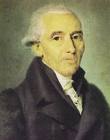The end of the worst week of my (new) college life is near. All that is required of me tomorrow is that I attend my classes. No more tests, assignments, projects, or any other forms of professorial torture.

The week actually began its hellish transformation late last week when a programming assignment appeared on our class web-site, with a pretty short deadline…..Tuesday at midnight. This development put a serious kink in my carefully developed schedule…..that was already filled to bursting.
Discrete Structures test Monday at 11AM. Stats II test Wednesday at 9AM, followed by an assignment in DataSets due at 2PM. Computer Science (programming) test Thursday. Calculus take home quiz due Friday at 8AM.
No, I was not happy to get the news about the programming assignment. Java remains almost impenetrable….the language so dense that it’s nearly impossible to develop algorithms. I’m too busy trying to get the damn program to compile to worry about whether or not the code actually works. The only array working for me is the dis-array in my brain.
As for Discrete Structures, let’s just say that my mind is the empty set and be done with it.
Ahhh, stats. I can give you the best damn z-statistic with multiple levels of significance, and a great confidence interval, in the neatest hand you ever did see……if I can ever figure out which test goes with what set of circumstances. Sheesh.
Calculus speaks for itself. Using the product rule inside the chain rule for a trig function is proof that the Devil had Sir Isaac and Prof. Leibnitz firmly under his control.
Datasets is not too bad, but I’m sure I’ll have a different opinion after that test on Monday. Perhaps I can use my putative query skills to comb the ocean of information for meaningful work in the long-haul trucking industry (a long cherished fantasy of my wife).
The good news in all this that the cycle doesn’t repeat until late March. The bad news is that the cycle repeats.
The only bright spot in this 168 hour long body-cavity search is that my professors have, to a person, been available, willing to teach individually, and patient beyond belief. In the words of just about any author (even that career option looks good, right now), any acts of omission are the fault of your scribe.
I know how Sisyphus felt.


 ), is the symbol for the ratio of the circumference of a circle to its diameter. Pi =
), is the symbol for the ratio of the circumference of a circle to its diameter. Pi = 







Recent Comments